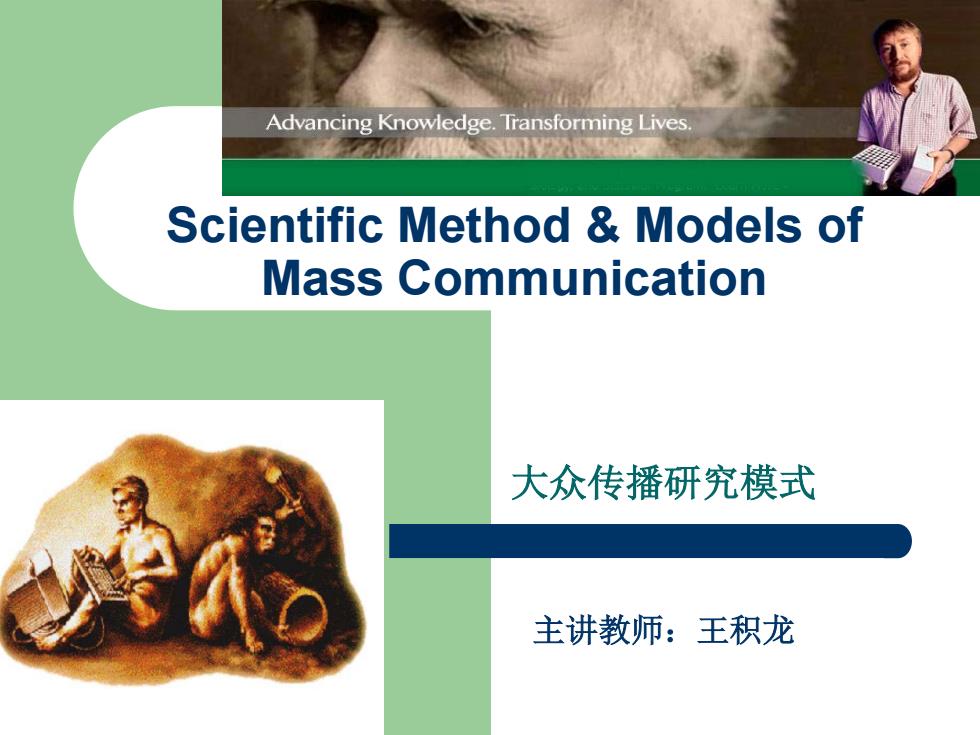
Advancing Knowledge.Transforming Lives. Scientific Method Models of Mass Communication 大众传播研究模式 主讲教师:王积龙
大众传播研究模式 Scientific Method & Models of Mass Communication 主讲教师:王积龙
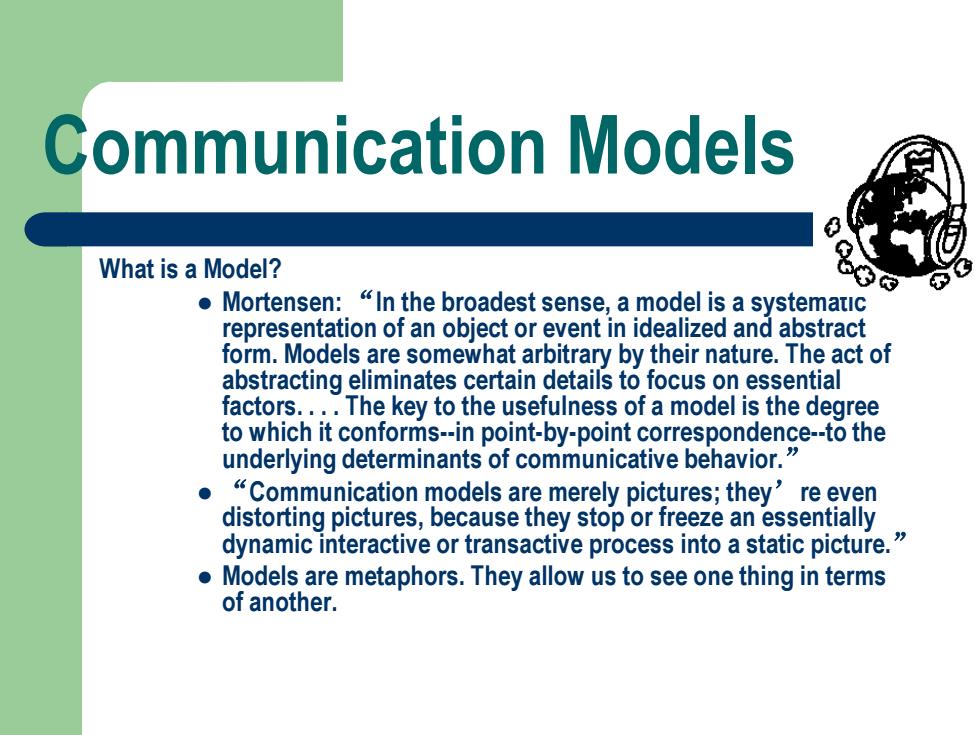
Communication Models What is a Model? 6的 Mortensen:"In the broadest sense,a model is a systematic representation of an object or event in idealized and abstract form.Models are somewhat arbitrary by their nature.The act of abstracting eliminates certain details to focus on essential factors....The key to the usefulness of a model is the degree to which it conforms--in point-by-point correspondence--to the underlying determinants of communicative behavior. ."Communication models are merely pictures;they're even distorting pictures,because they stop or freeze an essentially dynamic interactive or transactive process into a static picture." Models are metaphors.They allow us to see one thing in terms of another
Communication Models What is a Model? Mortensen: “In the broadest sense, a model is a systematic representation of an object or event in idealized and abstract form. Models are somewhat arbitrary by their nature. The act of abstracting eliminates certain details to focus on essential factors. . . . The key to the usefulness of a model is the degree to which it conforms--in point-by-point correspondence--to the underlying determinants of communicative behavior.” “Communication models are merely pictures; they’re even distorting pictures, because they stop or freeze an essentially dynamic interactive or transactive process into a static picture.” Models are metaphors. They allow us to see one thing in terms of another
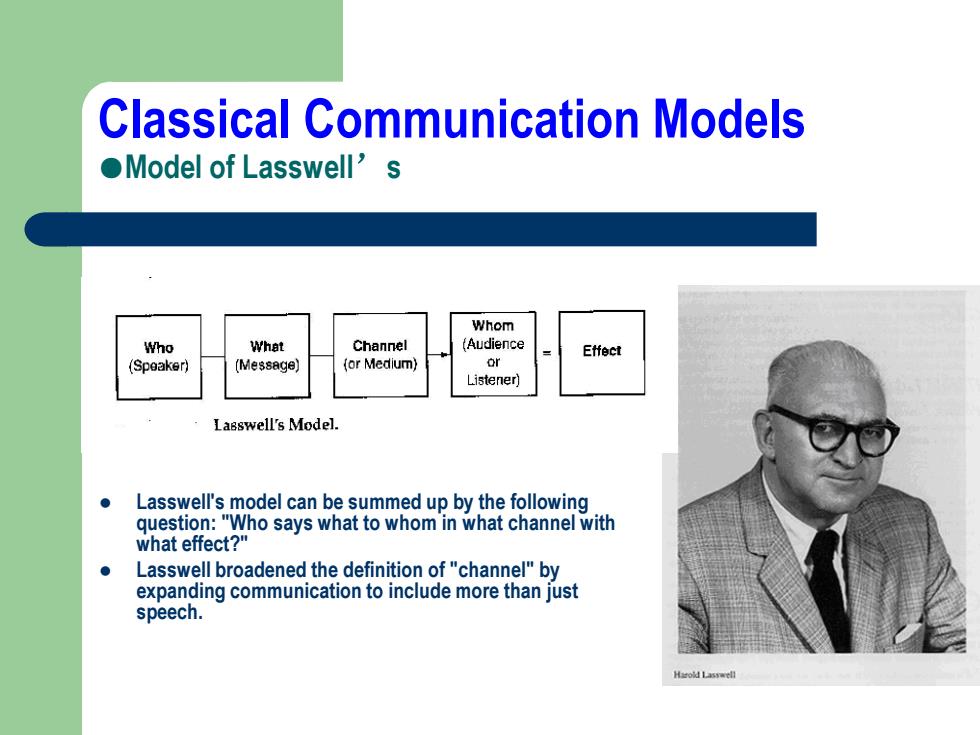
Classical Communication Models ●Model of Lasswell's Whom Who What Channel (Audience = Effect (Speaker) (Me88age】 (or Medium) r Listener) Lasswell's Model. Lasswell's model can be summed up by the following question:"Who says what to whom in what channel with what effect?" Lasswell broadened the definition of"channel"by expanding communication to include more than just speech
Classical Communication Models ●Model of Lasswell’s Lasswell's model can be summed up by the following question: "Who says what to whom in what channel with what effect?" Lasswell broadened the definition of "channel" by expanding communication to include more than just speech
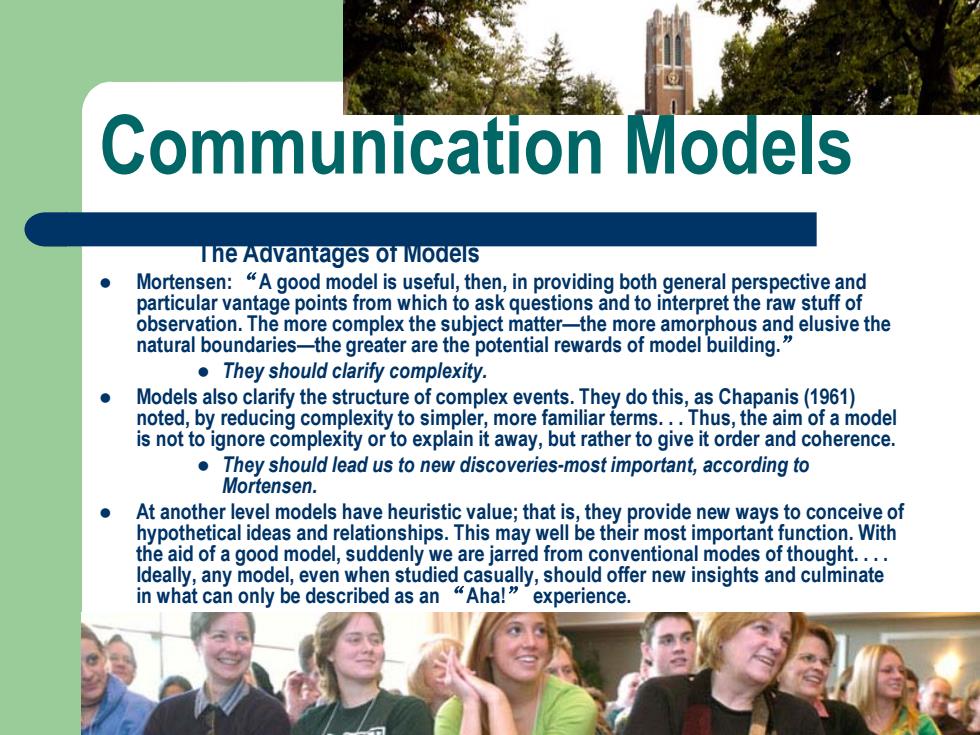
Communication Models The Advantages of Models Mortensen: "A good model is useful,then,in providing both general perspective and particular vantage points from which to ask questions and to interpret the raw stuff of observation.The more complex the subject matter-the more amorphous and elusive the natural boundaries-the greater are the potential rewards of model building. They should clarify complexity. Models also clarify the structure of complex events.They do this,as Chapanis(1961) noted,by reducing complexity to simpler,more familiar terms...Thus,the aim of a model is not to ignore complexity or to explain it away,but rather to give it order and coherence. ● They should lead us to new discoveries-most important,according to Mortensen. ● At another level models have heuristic value;that is,they provide new ways to conceive of hypothetical ideas and relationships.This may well be their most important function.With the aid of a good model,suddenly we are jarred from conventional modes of thought.... ldeally,any model,even when studied casually,should offer new insights and culminate in what can only be described as an“Ahal” experience
Communication Models The Advantages of Models Mortensen: “A good model is useful, then, in providing both general perspective and particular vantage points from which to ask questions and to interpret the raw stuff of observation. The more complex the subject matter—the more amorphous and elusive the natural boundaries—the greater are the potential rewards of model building.” They should clarify complexity. Models also clarify the structure of complex events. They do this, as Chapanis (1961) noted, by reducing complexity to simpler, more familiar terms. . . Thus, the aim of a model is not to ignore complexity or to explain it away, but rather to give it order and coherence. They should lead us to new discoveries-most important, according to Mortensen. At another level models have heuristic value; that is, they provide new ways to conceive of hypothetical ideas and relationships. This may well be their most important function. With the aid of a good model, suddenly we are jarred from conventional modes of thought. . . . Ideally, any model, even when studied casually, should offer new insights and culminate in what can only be described as an “Aha!” experience
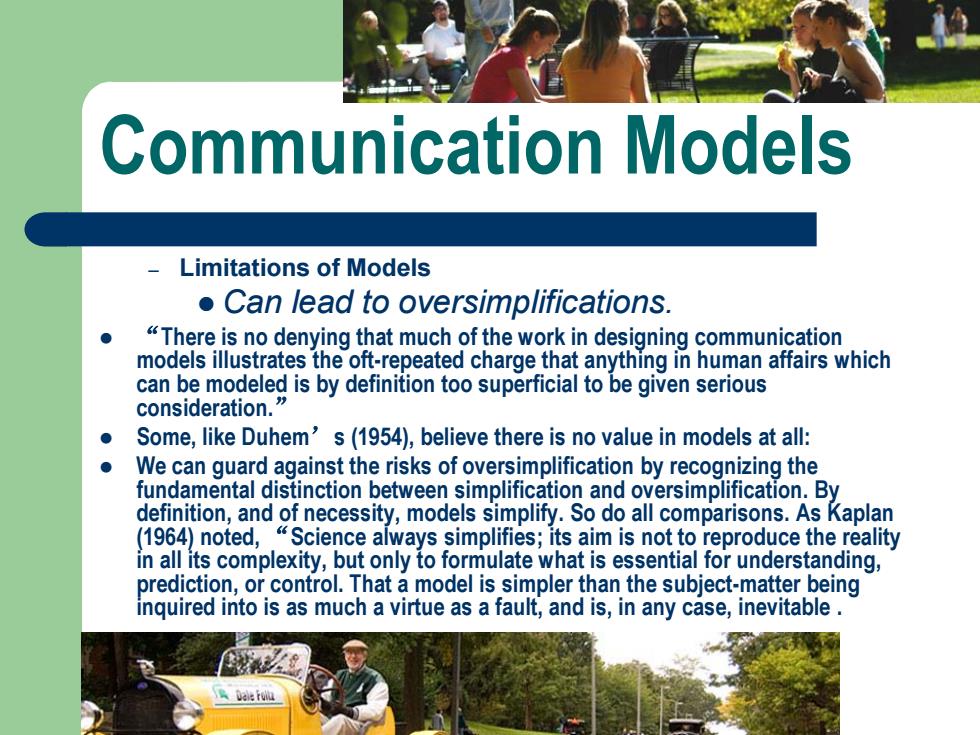
Communication Models Limitations of Models Can lead to oversimplifications ● "There is no denying that much of the work in designing communication models illustrates the oft-repeated charge that anything in human affairs which can be modeled is by definition too superficial to be given serious consideration.” ● Some,like Duhem's (1954),believe there is no value in models at all: We can guard against the risks of oversimplification by recognizing the fundamental distinction between simplification and oversimplification.By definition,and of necessity,models simplify.So do all comparisons.As Kaplan (1964)noted,"Science always simplifies;its aim is not to reproduce the reality in all its complexity,but only to formulate what is essential for understanding, prediction,or control.That a model is simpler than the subject-matter being inquired into is as much a virtue as a fault,and is,in any case,inevitable
Communication Models – Limitations of Models Can lead to oversimplifications. “There is no denying that much of the work in designing communication models illustrates the oft-repeated charge that anything in human affairs which can be modeled is by definition too superficial to be given serious consideration.” Some, like Duhem’s (1954), believe there is no value in models at all: We can guard against the risks of oversimplification by recognizing the fundamental distinction between simplification and oversimplification. By definition, and of necessity, models simplify. So do all comparisons. As Kaplan (1964) noted, “Science always simplifies; its aim is not to reproduce the reality in all its complexity, but only to formulate what is essential for understanding, prediction, or control. That a model is simpler than the subject-matter being inquired into is as much a virtue as a fault, and is, in any case, inevitable